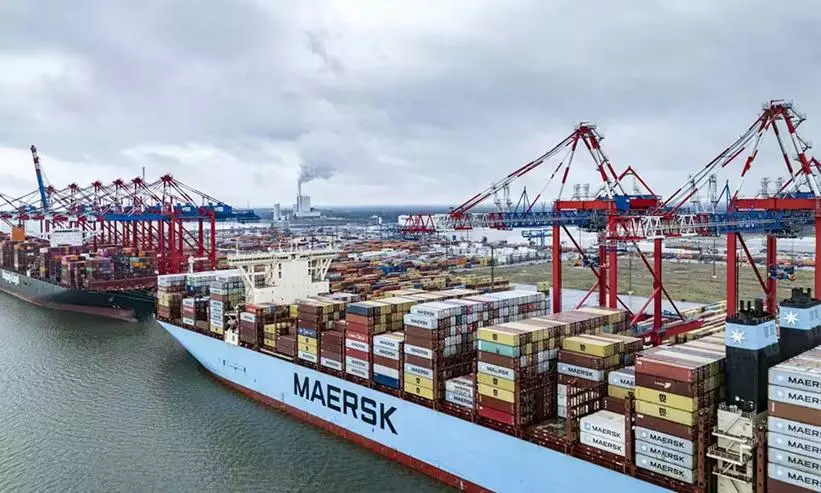Maersk launches 200 ship retrofit programme to reduce emission
This programme will reduce the slot cost by improving fuel efficiency and cargo-carrying capacity.

Integrated logistics company A.P. Moller - Maersk announced on October 2nd a substantial retrofit programme covering 200 vessels in its time-charter fleet involving 50 different shipowners. This initiative is designed to reduce the slot cost by improving fuel efficiency and cargo-carrying capacity leading to a decrease in both cost and Greenhouse Gas (GHG) emissions.
"Our medium- and long-term chartered fleet makes up a significant proportion of our operations as well as of our total fuel consumption," said Ahmed Hassan, Head of Asset Strategy and Strategic Partnerships at Maersk. "By working closely with our partners, we aim to implement solutions that not only reduce emissions but also enhance the overall competitiveness of our fleet."
Maersk has committed to a 35% absolute reduction in its scope 1 GHG emissions by 2030, against the 2022 baseline.
Hassan highlighted the immediate impact of the retrofit program and said, “While fuel transition is needed to reach our long-term goal of net-zero emissions by 2040, investments in existing fleet efficiency enhancement technologies is a powerful tool to gain significant emissions reductions in the short term."
According to the company's press release, Maersk and its 50 time-charter partners have already completed over 1,500 individual projects across 200 vessels. An additional 1,000 projects are scheduled for execution and expected to be finalised by 2027.
The investment cost for these technological upgrades is being shared between Maersk and the respective vessel owners.
Given the variety in vessel size and configuration, the retrofit solutions are diverse. However, common and high-impact upgrades include the replacement of the propeller or the bulbous bow, the release added.
The installation of an optimally designed bulbous bow is critical for reshaping water flow around the hull, which reduces drag and improves hydrodynamic efficiency, leading directly to lower fuel consumption.
Furthermore, new propellers combined with Pre-Swirl Devices are being implemented to maximise thrust while minimising energy loss.
Other advanced solutions being deployed include auxiliary engine waste heat recovery systems, which generate steam from auxiliary engine heat to reduce reliance on fuel-oil-fired boilers.
Similarly, the installation of shaft generator systems helps to cut down on auxiliary engine usage, contributing further to substantial fuel savings.



